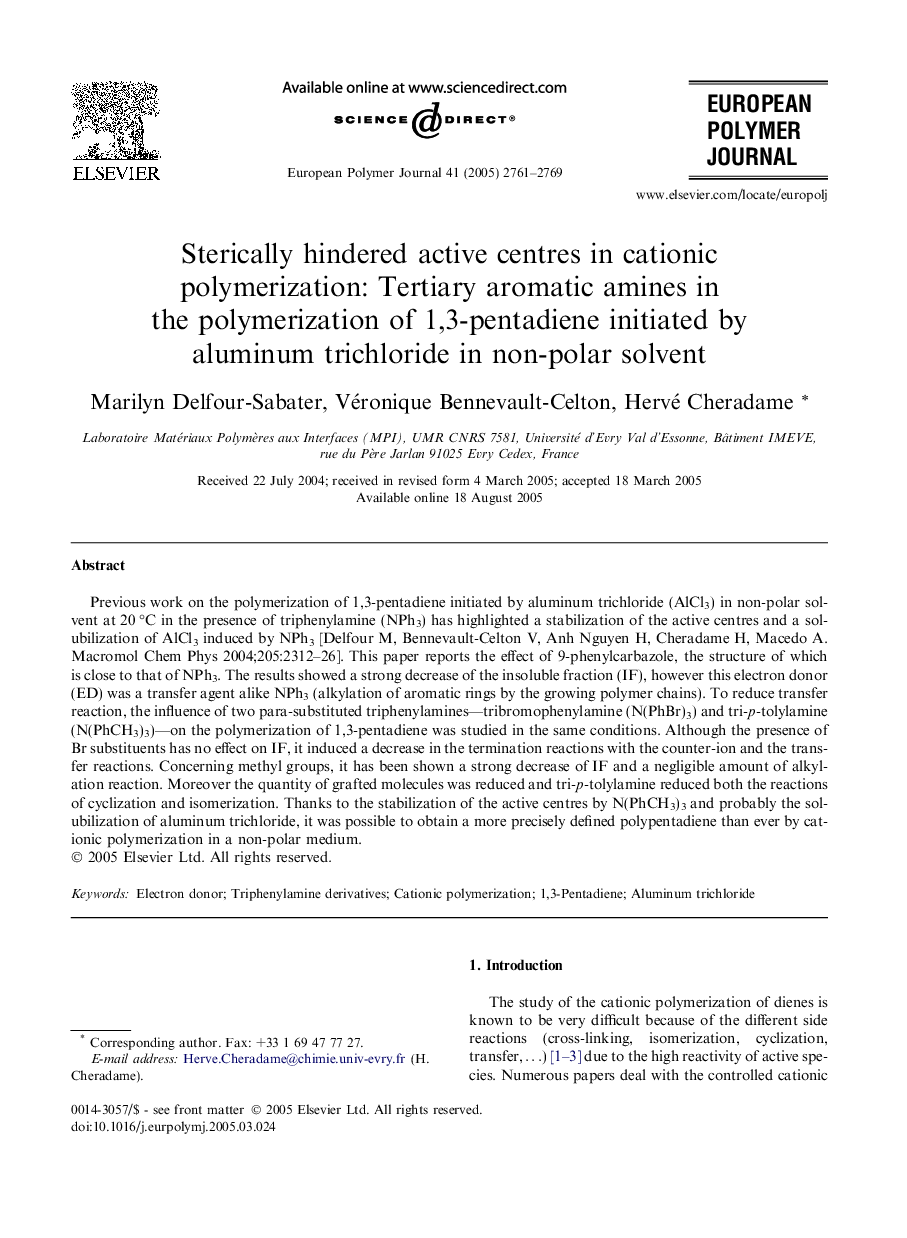| Article ID | Journal | Published Year | Pages | File Type |
|---|---|---|---|---|
| 1397121 | European Polymer Journal | 2005 | 9 Pages |
Previous work on the polymerization of 1,3-pentadiene initiated by aluminum trichloride (AlCl3) in non-polar solvent at 20 °C in the presence of triphenylamine (NPh3) has highlighted a stabilization of the active centres and a solubilization of AlCl3 induced by NPh3 [Delfour M, Bennevault-Celton V, Anh Nguyen H, Cheradame H, Macedo A. Macromol Chem Phys 2004;205:2312–26]. This paper reports the effect of 9-phenylcarbazole, the structure of which is close to that of NPh3. The results showed a strong decrease of the insoluble fraction (IF), however this electron donor (ED) was a transfer agent alike NPh3 (alkylation of aromatic rings by the growing polymer chains). To reduce transfer reaction, the influence of two para-substituted triphenylamines—tribromophenylamine (N(PhBr)3) and tri-p-tolylamine (N(PhCH3)3)—on the polymerization of 1,3-pentadiene was studied in the same conditions. Although the presence of Br substituents has no effect on IF, it induced a decrease in the termination reactions with the counter-ion and the transfer reactions. Concerning methyl groups, it has been shown a strong decrease of IF and a negligible amount of alkylation reaction. Moreover the quantity of grafted molecules was reduced and tri-p-tolylamine reduced both the reactions of cyclization and isomerization. Thanks to the stabilization of the active centres by N(PhCH3)3 and probably the solubilization of aluminum trichloride, it was possible to obtain a more precisely defined polypentadiene than ever by cationic polymerization in a non-polar medium.
